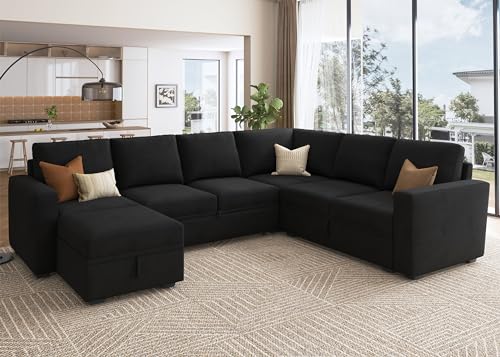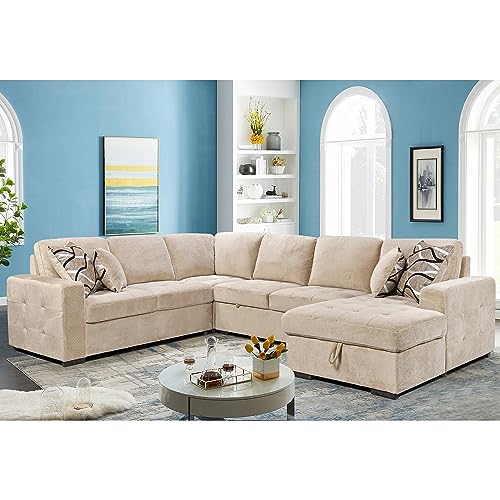20 Great Tweets Of All Time About What Are U Shaped Valleys
페이지 정보
작성자 Hellen Gabb 작성일24-07-04 02:18 조회9회 댓글0건관련링크
본문
 What Are sofa bed u shape Shaped Valleys?
What Are sofa bed u shape Shaped Valleys?A U-shaped valley is a geomorphological formation with high, steep sides and a rounded or flat valley bottom. These valleys are created by glaciation. They are often filled with lakes or rivers, sandtraps along a golf course kettle lakes (water hazards), or other natural features.
 The process of glacial erosion creates U-shaped valleys as rocks are removed from the sides and the bottom of the valley. These valleys are found in mountainous regions around the globe.
The process of glacial erosion creates U-shaped valleys as rocks are removed from the sides and the bottom of the valley. These valleys are found in mountainous regions around the globe.They are formed by glaciers
Glaciers are massive masses of ice that form and then move down mountains. As they erode they create U shaped valleys that have flat floors and steep sides. These valleys differ from the river valleys, which typically have the shape of the shape of a V. Although glacial erosion can happen anyplace, these valleys tend to be more prevalent in mountainous areas. They are so distinct that you can tell if the landscape was created by glaciers or rivers.
The formation of a U-shaped gorge begins with an existing V-shaped river valley. As the glacier is eroding the landscape it encroaches on the V-shaped river valley, and forms an inverted U-shaped shape. The ice also scrubbing the surface of land creating straight and high walls on the sides of valley. This process is referred to as glaciation, and it takes the use of a lot of force to break up the earth in this way.
As the glacier continues to degrade the landscape it also makes the valley wider and deeper. This is because glacier has a lower frictional resistance compared to the rocks around it. As the glacier moves through the valley, it also causes abrasion of the rock surfaces. This pulls the less durable rocks away from the valley walls, a process known as plucking. These processes help to smooth, widen and deepen the U-shaped valley.
This also causes a small u shape sofa valley to 'hang over the main one. This valley can sometimes be filled with ribbon lakes, which are formed when water flows through the glacier. The valley is also characterized by striations and ruts on the sides and bottom, as in addition to moraines and till on the floor.
U-shaped valleys are commonplace everywhere in the world. They are prevalent in mountainous areas, including the Andes, Alps, Caucasus, Himalaya and Rocky Mountains. In the United States they are usually located in national parks. Examples include Glacier National Park and the Nant Ffrancon Valley in Wales. In some cases the valleys can extend to coastal locations and transform into fjords. This is a natural process that happens when the glacier melts, and it can take many thousands of years for these valleys to be created.
The ocean's depths are deep
U-shaped valleys are characterized by steep sides that curve at the bottom and wide, flat valley floor. They are formed by river valleys that have been filled with glaciers during the Ice Age. Glaciers degrade the valley floor by abrasion and plucking which causes the valley to deepen and widen more equally than a river would. These kinds of features are prevalent throughout the globe in mountainous areas which include the Andes, Alps, Himalayas, Rocky Mountains, and New Zealand.
Glacial erosion of a river valley may transform it into a u-shaped valley by deepening and enlarging it. The erosive force of the glacier can cause smaller side valleys to be left hanging above the main valley that is typically marked by waterfalls. These are referred to as "hanging valleys" due to the fact that they are hung over the main valley when the glacier recedes.
These valleys are usually surrounded by forests and may contain lakes. Some valleys are dry and used for farming, whereas others are flooded and can be explored as part of a hiking or kayaking excursion. Many of these valleys can be found in Alaska which is the region where melting glaciers is the most evident.
Valley glaciers are huge streams of ice that resemble rivers and slowly move down the slopes of mountains during a glacier. They can be as deep as 1000 feet and are the predominant type of alpine terrains that suffer from valley erosion. They eat away the rocks at the bottom of the valley, leaving behind depressions and holes that are filled with water. The lakes that result are narrow and long and can be found on the peaks of certain mountains.
Another type of valley, a glacial trough is a U-shaped trough that extends into salt water and creates an fjord. These are common in Norway in Norway, where they are known as fjords. However, they are also found in other areas of the world. They are created by melting glaciers and are visible on a map of the globe. They are characterized by their steep sides and rounded sides in the U-shape. The walls of troughs are typically made of granite.
They are steep
A U shape valley is a formation of geology with high, steep sides and a smooth bottom. They are quite frequent in mountainous areas and are usually formed by glaciers. This is because glaciers slow downhill and scour the land. Scientists used to think that glaciers could not carve a valley because they are so soft but now we know that they can create these shapes.
Glaciers cut distinctive u-shaped valleys through the processes of plucking as well as abrasion. These processes widen, increase the slope and deepen V-shaped valleys into a U shape through erosion. The slopes of the valley bottom are also altered. These changes occur at the front of the glacier as it turns into the valley. This is the reason why the top of a U-shaped valley is typically larger than the lower.
U shaped valleys are sometimes filled with lakes. These kettle lakes form in hollows eroded by the glacier or surrounded by the moraine. The lake can be a temporary feature as the glacier melts, or can remain after the glacier recedes. They are often found in conjunction with cirques.
Another kind of valley is a flat-floored one. This valley is formed by streams that degrade the soil. However it does not have a steep slope like the U-shaped ones. They are typically found in mountainous regions and are more affluent than other types.
There are many kinds of valleys across the world. Each has its own unique appearance. The most popular kind of valley is the V-shaped, but there are also rift and U-shaped valleys. A rift valley is formed when the earth's surface is breaking into two. They are typically narrow valleys with steep sides. The Nant Ffrancon valley in Snowdonia, Wales is a good example of this.
There are a variety of common.
U-shaped valleys are distinguished by their broad bases unlike V-shaped ones. Glaciers are the main cause of these valleys, which are usually located in mountain ranges. Glaciers are massive blocks made of snow and ice which erode the landscape as they slide downhill. They erode valleys by crushing the rocks with friction and the abrasion. This process is known as Scouring. When they begin to erode the landscape, the glaciers form distinct shapes that resemble an U-shaped letter. These valleys are referred to as U-shaped valleys. They can be found in a variety of locations across the world.
The formation of these valleys occurs when glaciers alter existing river valleys. The glacier's slow movements and weight erodes the valley's floor and sides and creates a distinctive U shape. This process, also known as glacial erosion, has resulted in some of the most stunning landscapes on Earth.
These valleys can also be called trough valleys or glacial troughs. They are found all over the globe, and are especially found in regions that have glaciers and mountains. They can range in size from a few metres to several hundred kilometers. They also differ in depth and length. The deeper the valley, the larger the fluctuation of temperature will be.
When a Double chaise u shaped Sectional-shaped valley gets filled with water, it develops into a ribbon lake or fjord. The ribbon lakes are formed in depressions where glaciers eroded less resistant rocks. They can also develop in valleys in which the glacier was stopped by a moraine wall.
Aside from U-shaped valleys, the ribbon lakes may also have glacial features such as hanging valleys, erratics, and moraine dams. Erratics are massive rocks that were deposited by the glacier during its movement. They are commonly used to define the boundaries of glaciated regions.
These smaller valleys are left 'hanging" above the main valley that was created by the glacier. They aren't as deep than the main valley and they have less ice. They are created by glaciers that tributary to the main valley and are usually overshadowed by waterfalls.
댓글목록
등록된 댓글이 없습니다.


